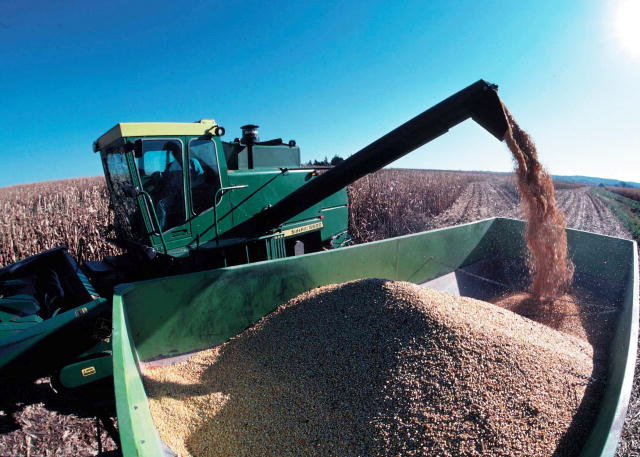REVIEW: Agriculture
Agriculture

Modern day farming techniques take a heavier toll on the environment than traditional farming practices. Photo courtesy of Georgia Virtual Learning.
Throughout most of human history, food was produced mainly through subsistence farming, in which just enough food was grown to support one's family. Farmers used animal and human labor rather than machines, and relied on traditional farming practices that limited crops to the amount of arable land, water and labor available. They also planted many different crops on the same plot of land and rarely used pesticides. This type of farming is still practiced in most of the developing world. However, in the last century, human population growth has led to the need for more efficient agricultural methods that can produce more food to feed that growing population.
In modern agriculture, fossil fuel, pesticide, fertilizer and water usage have increased dramatically. This has taken a heavy toll on the environment. Soil erosion rates have increased due to deforestation, plowing, tilling and overgrazing. This can lead to desertification and salinization. Salinization happens because of over irrigation, when salts build up in the upper soil layers. Desertification is the loss of productive farmland due to topsoil erosion, causing previously arable lands to be converted into deserts.
There are methods of farming that can aid in soil conservation:
1. Contour plowing: plow for planting with the slope of the land, to minimize runoff of topsoil
2. No-till farming: plant seeds of next year's crop in slits cut into the ground, through the remains of previous year's crop (rather than clearing the entire field for replanting)
3. Leave strips of vegetation when plowing
4. Use low-impact or organic farming techniques, which emphasize little to no pesticide, fertilizer or fossil fuel usage